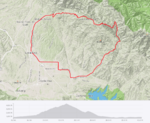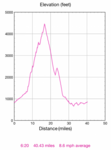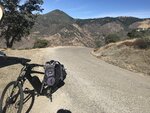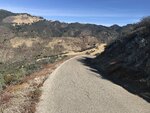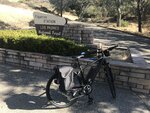The day after the CrossCurrent S-2 arrived, I changed the front Chainring to a 42t. It worked great and may have been enough, but I also changed the rear cassette to a 11T-40T. I had to adjust the "B" screw, but the shifting is smooth. I have only had 4 long rides with various hills, but I am very satisfied with the set up. I am planning a 45 miler with 4,600 feet of climbing. If anyone is interested, I will post results. I love the bike and us old folks certainly need the assist at times, but I try to ride mostly with the motor "OFF". Today I will receive the new Fast Battery Charger I ordered. There is one thing I already do not like about the new battery charger. The 1st step in buying the Fast charger is to pay for the stock one that I now don't need. Juiced should allow you to select which one you want when ordering the bike.
For anyone even vaguely interested, I completed a ride to test the long-distance performance of the CCS2 in tough climbs. I covered 40 miles with STRAVA saying I had 4,773 feet of climbing.
I will start with this note: There was a movie called “No country for old men”. The movie did not identify where that country was. I know where it is. It is called Figueroa Mountain, and it is located 11 miles east of Los Olivos Ca.
I should also note that this test was to determine how far you can go on a single charge. I used the absolute least battery I could and still function. I have a 42T on the front and a 11T-40T cassette on the rear. I weight 207 am I am 72.5 years old, and the bike with rack-water and stuff probably weights 60+ lbs. All of these things have to be considered in evaluation your performance vs mine.
I have ridden this exact course before on my 27 lb. road bike. There were a couple of short sections where I had to step off the road bike and push.
My plan for the E-bike on the climb was to use the lowest gears with no assistance until I could not make it any further, and then start with ECO mode. My plan worked out- sorta… There is a 6.7 mile section before the climb starts. There is only 560 feet of altitude gain for the entire section; pretty flat. On the road bike it feels flat, on the E-bike; - not so flat. A couple of the little short hills did not feel so little or short. However, I made the first 6.7 without using any battery. Once the climb started, big difference. I had to use Eco most of the climb with a few sections that required 1 or 2 or 3 to complete. This is with me in the lowest gear, and applying all the pedal power I could muster. I stopped 9 times on the way up to take battery readings, - and to rest a bit and wipe sweat from eyes. I also stopped 4 times on the way down to let the breaks cool off a bit.
I tried to take the readings that are relevant to battery usage. I will attach a spreadsheet of all data. I took altitude readings at each stop and calculated the Altitude gain per mile. On some sections you can clearly see the altitude gain sucking the power from the battery. With only 8 mostly flat miles to go I had 3 battery bars left. I knew this was plenty to get back, (ended up with 2 bars) so I pushed the assist to
level 3 because I was thirsty. (I had parked in front of a Brewery)
Would appreciate any analysis of data provided. For me this is as far as I can go under these conditions. If you are younger and stronger than me, then you will be able to stretch out the miles, but a 60 lb. bike on a steep grade is going to be a problem no matter who you are…..
NOTE: there were a 100+ dip on the way up and down that screwed up the gain per segment on a couple of segments, but no big deal….
EDIT # 1 It occurred to me that I did not describe the road I traveled very well. I would not want the reader to think I was climbing a dirt brush trail up the Mt. LOL Figueroa Mt. road is paved all but about 3 miles which is dirt/gravel. That 3 miles is pretty rough, but passable with a car, and not much of a problem with a bike. I have included some pictures so the reader can get a feel for the road.
